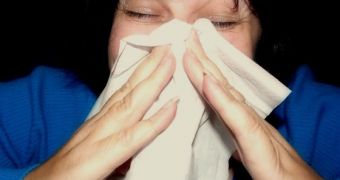As the allergies season is starting, you should expect to see more people than usual sneezing on the street or at work, and much more tears all around. According to official statistics, the number of allergies of all kinds is on the rise, and has been engaged in this trend for many years. Oddly enough, this only seems to occur in the developed world, in countries such as the United States and the United Kingdom. Because of this, many have said that lifestyle in these nations may be partially to blame for the surge in allergy cases, LiveScience reports.
According to healthcare experts, the human immune system is primarily responsible for whether we experience allergies or not. Exposure to various pathogens as children is very important for this, and kids who played outside a lot, coming in contact with all manner of surfaces, are less likely to experience allergies. Those who have been kept mostly indoors are at high risk of developing several types of reactions, to a wide array of contaminants. Given that, in the developed world, parents tend to keep their children too safe from germs and bacteria, this may explain the surge in allergies.
In the case of people living in the United States, this is obvious. More than half of the entire population in this country experiences immune-system responses to a variety of allergens, including such regularly harmless things as cat hair, pollen, milk, and sometimes even peanuts. The data belongs to a nation-wide survey that the US National Institutes of Health (NIH) conducted between 1988 and 1994. Various types of allergies and their prevalence in the general population were assessed at the time. When compared with the results of a similar study conducted between 1976 and 1980, the numbers showed a 200- to 500-percent increase in the incidence of allergy cases, depending on the allergen considered.
“You walk in to any kindergarten, and there [are there] all peanut-free kindergarteners because of the high incidence of peanut allergy. Those kids are real, and they weren't there the generation before,” allergist Dr. Jacqueline S. Eghrari-Sabet, who is an American Academy of Allergy Asthma & Immunology fellow, and also an expert at the Gaithersburg, Maryland-based Family Asthma & Allergy Care, explains. Statistic data recently published by the US Centers for Disease Control and Prevention (CDC) also showed that children's allergies had increased markedly as well, within the decade spanning from 1997 to 2007.

 14 DAY TRIAL //
14 DAY TRIAL //